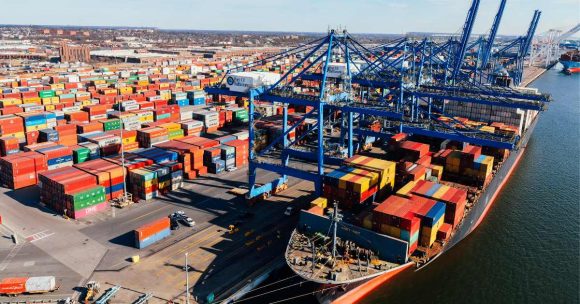Maersk’s CEO Vincent Clerc has weighed in on the Red Sea crisis highlighting that the months ahead are going to be tough for both carriers and businesses.
“We are faced with these challenges together and we need to make sure that we stay close to them as we handle the new set of circumstances that continues to unfold in front of us,” says Clerc.
The logistics world is feeling the “shocks” of this maritime crisis, having to think of alternatives for shipments, reroute vessels, and cope with volatile freight costs.
Why is the Red Sea so important?
The Red Sea is a crucial corridor connecting the Mediterranean Sea, the Indian Ocean, and beyond. Its strategic location gives shippers access to Europe, Asia, and Africa. The Red Sea route is the natural sailing route between these regions.
Ships being redeployed
Clerc says all ships that can sail and all ships that were previously not well utilized in other parts of the world have been redeployed to try to plug holes.
“It has alleviated part of the problem, but far from all the problems across the industry, including for Maersk. We are going to have in the coming month missing positions or ships that are sailing that are a significantly (sic) different size from what we normally would have on that string, which will also imply reduced ability for us to carry all the demand that there is,” he says.
What is the cost of the Red Sea crisis?
Carriers are facing higher costs due to longer cargo journeys and reduced capacity, leading to a significant rise in container prices. Maersk has accepted that many of these costs will persist beyond the Red Sea situation.
“The longer that this lasts, the more our costs will get deeply ingrained. We don’t know yet exactly how much of these costs we will recover and for how long. The higher rates we are seeing right now are of a temporary nature,” says Clerc.
And looking ahead?
“We will see eventually that they go back to market as some of these problems get alleviated either by the new tonnage being phased gradually in or by us resuming normal sailing routes in the near future,”
Vincent Clerc emphasized that Maersk will only resume sailing through the Red Sea and Gulf of Aden when it’s safe for seafarers, ships, and cargo.
Once resolved, ships can quickly return to their usual Suez Canal routes, but some will first need to finish their journey around the Cape of Good Hope. Clerc warned that this will cause temporary port congestion as ships from different routes arrive at the same time.
Photo Credit: Canva
About the author
Sharl is a qualified journalist. He has over 10 years’ experience in the media industry, including positions as an editor of a magazine and Business Editor of a daily newspaper. Sharl also has experience in logistics specifically operations, where he worked with global food aid organisations distributing food into Africa. Sharl enjoys writing business stories and human interest pieces.











